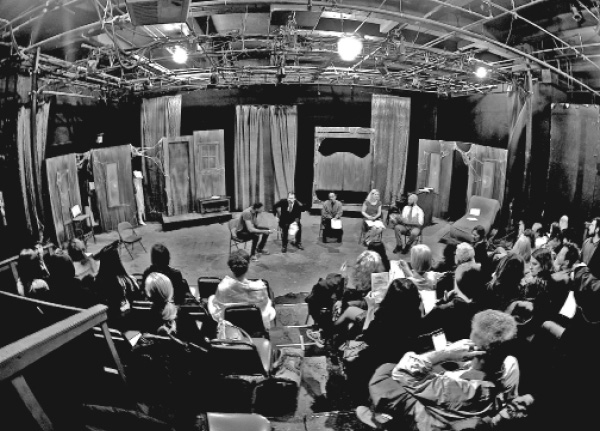
CARLETT'S JUST CARLETT
first performed on March 15, 2017
365 Women NYC Festival, Theater For The New City, New York, NY
performed once in 2017
KAT MUSTATEA
Michole Biancosino, Almeria Campbell, Russell Jordan, Doug Rossi, Sarah Sawyer, Carl Steele
New York, NY
mustatea.com
CARLETT'S JUST CARLETT
KAT MUSTATEA
“Although technically it might be possible for surgery to make a correction in either the male or the female direction, why someone would choose to become a woman is baffling to me.”—Ansel, Carlett’s Just Carlett
“Carlett’s Just Carlett” is a play that chronicles the events around the disappearance of a historical person known as Carlett Angianlee Brown, circa 1953. Inspired by Virginia Woolf’s Orlando, the performance examines the fluid boundaries of gender, and the notion that we each, as individuals, contain multitudes. Told from the point of view of five characters who had known Carlett at different stages of her transformation from a naval crewman to a female cover model, the story circles around the gap left after her disappearance.
Born Charles Robert Brown in Pittsburgh around 1927 and raised as a man, she joined the Navy in 1950 in order to receive treatment for what was later understood to be the condition of being intersex—having both male and female sexual characteristics. She declined the Navy’s offer to remove the female sexual organs and remain a man, choosing instead to leave military service and live as a woman. She was photographed for the cover of Jet Magazine, where she announced her intention to travel to Denmark to have gender affirmation surgery, as it was not available in the United States; and to marry her boyfriend, an army sergeant. If successful, she would have been the first African-American to undergo such surgery. No records of her whereabouts exist after 1953.
Beyond the trajectory of this one life, there is a largely untold story of countless people who have been born intersex in every society, at every point in history. In the 1950s, the United States simmered with systemic inequity and racial injustice. Fluidity of gender was barely mentioned in medical records of the time, while being as frequent of an occurrence as it is today. This is an attempt to fill in gaps, to describe through one person the many instances of individuals navigating a society in which they are utterly invisible.